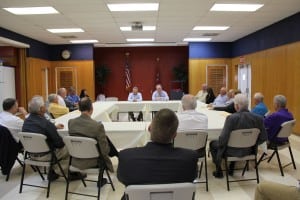David Callis
Executive Vice President and General Manager
“Safe, reliable and affordable.” That’s a phrase you hear from us quite a bit. It accurately describes the commitment we make to you every day. We make every effort to ensure that the power you need is safely and reliably delivered to your homes and businesses. And we do so as cost-effectively as possible.
Here’s another term you don’t hear as much but that’s just as important — if not more so:
Resiliency.
Ten years ago, a large hurricane hit the Gulf Coast. By most measures, it was the most devastating storm to strike the United States. Hurricane Katrina killed nearly 2,000 people. With the widespread damage from the storm and subsequent flooding, it impacted some 90,000 square miles along the Gulf of Mexico.
More than 75 percent of New Orleans was underwater at one point in time. Hundreds of thousands of people were evacuated. Homes and businesses were submerged, and the areas that weren’t flooded had no electricity.
Entergy, an investor-owned utility, serves the city of New Orleans. Much of the surrounding area along the coast is served by electric cooperatives. For several weeks, linemen from utilities across the nation left their homes to help restore and rebuild the critical infrastructure.
The massive coordination effort to rebuild thousands of miles of wire and replace tens of thousands of poles required Herculean efforts by electric utilities. You can’t plan for a disaster of that magnitude. We can, and do, prepare for emergencies, but we can’t outguess Mother Nature. Even with the best forecasting, hurricanes, tornadoes and ice storms often make unpredictable, last-minute variations that defy the best-laid plans for disaster response. In fact, you might not recall that Hurricane Rita hit the Gulf Coast about a month after Katrina, causing damage to some of the same areas that were still recovering.
I was in New Orleans a few weeks before Katrina and later helped coordinate some of the relief efforts that Tennessee’s cooperatives mounted. I’ve returned to the Gulf several times over the past few years, including earlier this year. A full decade later, the impact is still apparent in many areas. Parts of New Orleans and other areas of the Gulf Coast are, unbelievably, still recovering from the devastation.
For someone who has worked for decades in the electric utility industry, two things stand out. First and foremost is the resiliency of the residents. Despite losing their homes and nearly losing their lives, they refuse to abandon their neighborhoods.
This type of courage is similar to a prizefighter who is battered by a bigger opponent but stubbornly refuses to go down. The men and women who survived Katrina continue to thrive and continue with their lives. They refuse to be defeated.
The same resiliency can be said about the electric grid and those who maintain it. Imagine building a structure that costs millions of dollars and takes years to complete. Then, in a matter of hours, you see it crumble to the ground under the force of a powerful storm.
How do you handle that type of challenge? If you’re a lineman, you pack a bag, say goodbye to your family and get to work rebuilding. It might take several days or even weeks, but you stay with it until the job is done.
The event could be a Hurricane Katrina, an EF-4 tornado or a midwinter ice storm. No matter what the challenge, the resiliency of the electric grid is as strong as the character of the men and women who build and maintain it.
It’s what we’ve done for the past 80 years and will continue to do well into the future.


